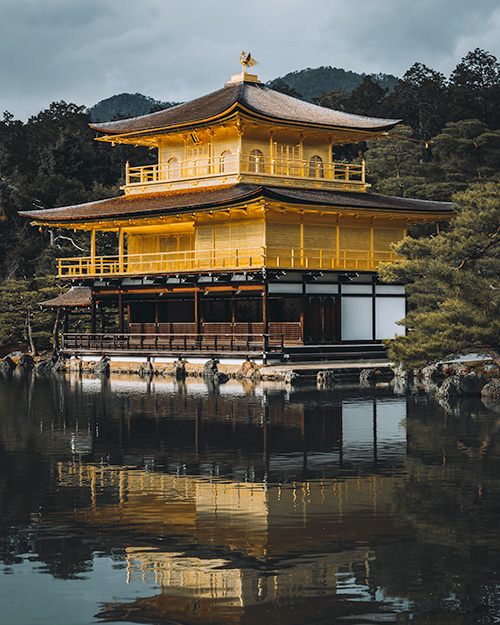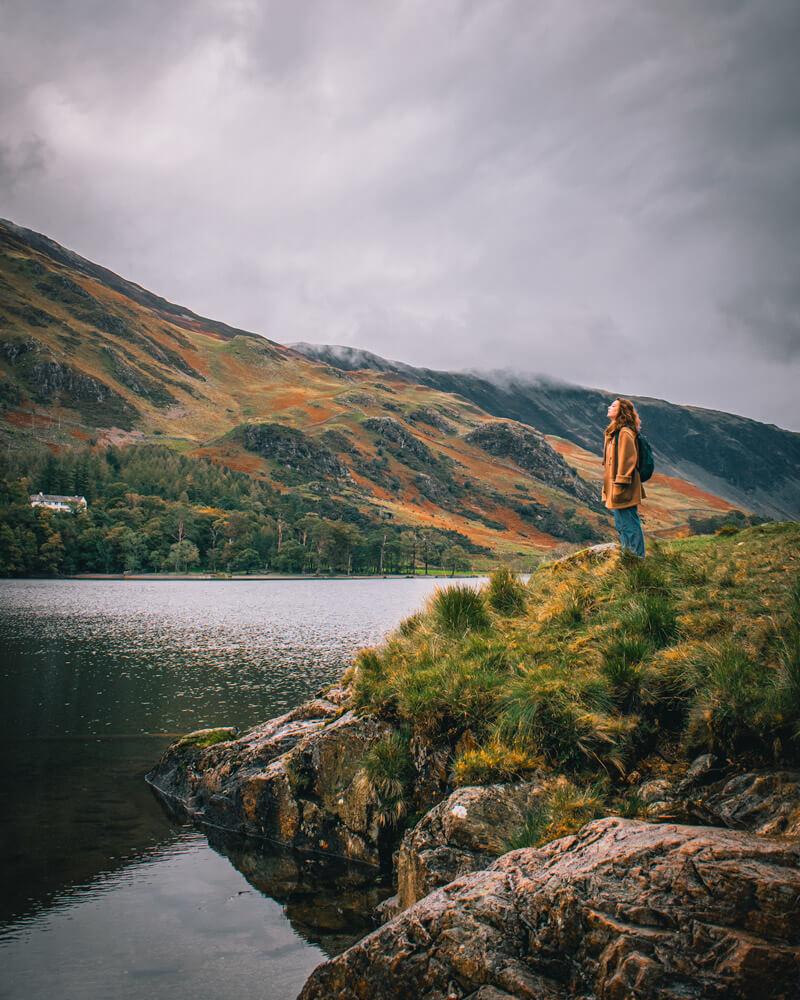The Best 5 Days in Tokyo: Complete Guide
Tokyo needs no introduction. Everyone knows about it and everyone has fantasies of travelling to this distant metropolis of the future. Skyscrapers, neon lights, bullet trains and dancing robots come to mind. Not to mention the food.
However, there is so much more on offer. Known as the city of cities, each area of Tokyo presents a unique side of Japan’s capital. Shinjuku is the Tokyo most people would recognise however there are plenty more areas to explore.
The variety found within the different neighbourhoods makes for a fantastic trip. You will never become bored of Tokyo which in our opinion makes it one of the best cities in the world to visit. Our itinerary is based on the different areas that you can’t miss so read on for more information.
Also, if you do find yourself needing a break from the city, Tokyo has outstanding options for day trips. Thanks to the famous Japanese transport system, accessing other parts of the country is a breeze. Continue reading to find out the best day trips from Tokyo.
Disclaimer: This post contains affiliate links.
Contents
- How to get to Tokyo
- How to get around Tokyo
- Best time to visit Tokyo
- Where to stay in Tokyo
- Tokyo Itinerary
- Tokyo Day Trip Suggestions
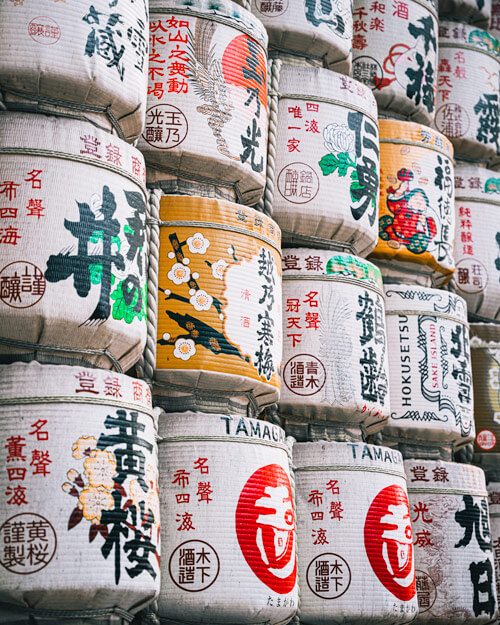
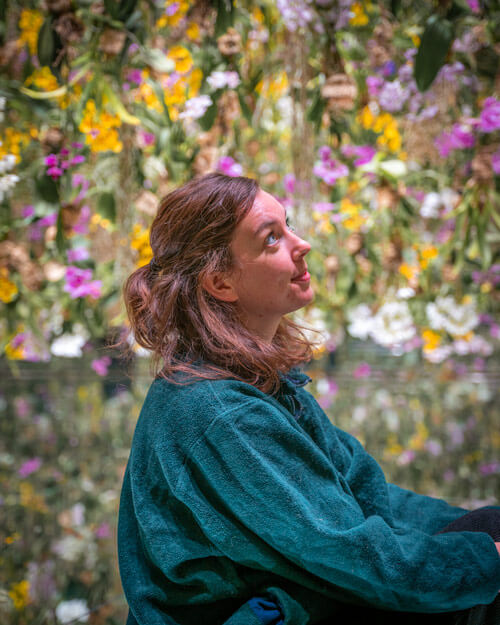
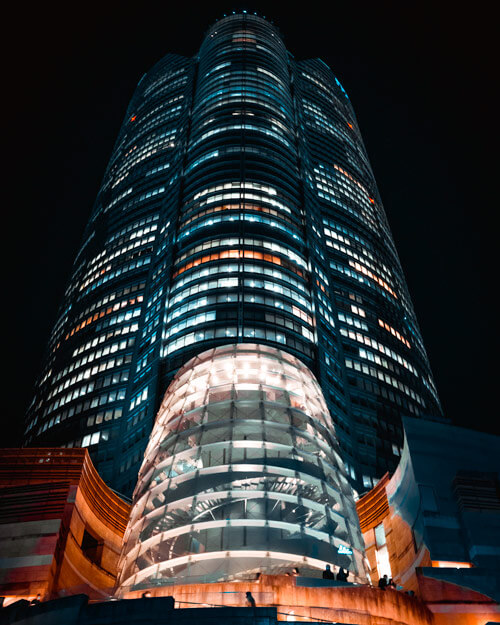
How to get to Tokyo
Assuming you are travelling internationally, you will arrive at either Haneda Airport (Tokyo International) or Narita Airport. To find the cheapest flights, we use Skyscanner. Haneda Airport is closer to Tokyo city centre, taking just 15 minutes on the train or monorail and costing JPY400-500 (£2.50-£3.10).
Narita Airport is further afield but is served by more budget airlines. There are a few train options to travel between Tokyo and this airport. The JR Narita Express takes 60 minutes and costs JPY3,000 (£18.70). The JR Soba Line is slower, taking 90 minutes but costing JPY1,340 (£8.35). Alternatively, take the Keisei Line to Nippori Station and transfer onto the JR Yamanote Line or JR Keihin-Tohoku Line which costs JPY1,210 (£7.50) for the 100-minute journey.
Unless you’re a baller, don’t get a taxi. From Narita, it costs JPY30,000 (£187) and Haneda JPY5,600 (£35).
How to get around Tokyo
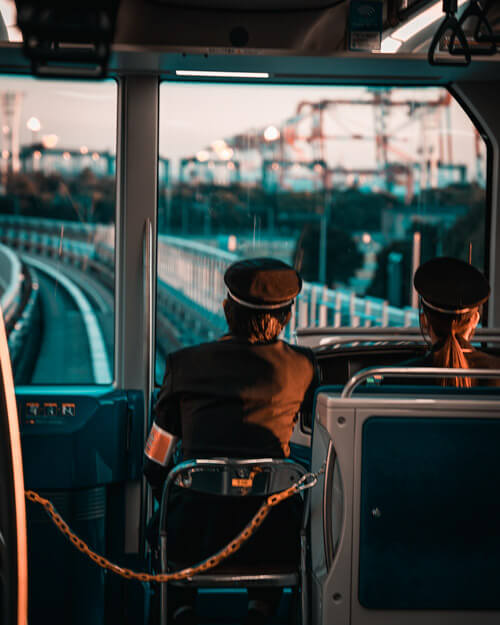
Straight off the plane, go and buy yourself a Suica card. We fell in love with these cards during our stay as it makes life so much easier. The card costs JPY500 (£3.10) and you can get one at most metro ticket machines. We recommend putting JPY10,000 (£62.30) on to cover your entire stay in Tokyo.
The card can be used to pay for the metro, buses and even vending machines with just a tap. This is so convenient as individual tickets for metro journeys can be confusing to buy and easy to lose.
Alternatively, Tokyo is a fantastic city for cycling, everyone is doing it. Main roads have cycle lanes that are flat and safe. If there isn’t a cycle lane you can freely use the pavement just be careful you don’t take anyone out. If this sounds good, download the Hello Cycling app to find bikes that you can use around the city.
Best time to visit Tokyo
We visited Tokyo in winter, specifically in December which was fantastic. The weather is pretty mild which meant that it was still warm enough to see the last bits of autumnal colours of the trees. Winter is also a quiet period with fewer tourists which is great for visiting the sights and booking cheaper accommodation.
Spring during the famous cherry blossoms is the most beautiful time of the year to visit. You can see cherry blossoms at various points throughout Tokyo including Ueno-Koen Park and Meguro River. The window to see the pink blossoms is short which means it is an incredibly busy period. Expect more crowds at the sights and higher accommodation prices.
Autumn would be a fantastic time to visit Tokyo. The Japanese maple trees turn crimson red and burnt orange, giving the city even more vibrance. You get the same colour and natural beauty as the cherry blossoms but with fewer people. We would love to go back during this time of year.
Personally, we would avoid the summer months. Jack has visited Japan during July and can vouch for how hot it gets. You do not want to find yourself in a situation where it is too hot to do certain things. For example, Jack ended up leaving a FujiQ theme park early due to the heat.
Where to stay in Tokyo
The short answer is, if you are not on a budget, then stay in Shinjuku. Here you will have the best transportation connections, bright lights, amazing food, and lots of fun. However, it can be hectic. Shinjuku station is the busiest train station in the world!
If you are on a budget like we were, we honestly recommend staying anywhere that is cheap. Pretty much everywhere in Tokyo is safe and has restaurants and convenience stores. As long as the place has good reviews and is one metro trip to the main metro loop, you’re good to go. Adding 10-20 mins to your journey can save you a lot of money and the metro is so good that it doesn’t feel like too much of a sacrifice.
We stayed in Tokyo Guest House Itebashi-juku, the cheapest hostel we could find which turned out to be one of the nicest hostels we have been in. It was 15 minutes away from Ikebukuro where the main metro loop goes through. So for the inconvenience of 15 minutes, we got ourselves a bargain, definitely worth it!
Tokyo Itinerary Summary
- Day one – Harajuku, Shibuya
- Day two – Shinjuku
- Day three – Asakusa, Akihabara
- Day four – Tsukiji, Ginza, Roppongi
- Day five – Tokyo Station & teamLab Planets
Tokyo Detailed Itinerary
Day 1 – Harajuku and Shibuya
Your first day in Tokyo starts in Harajuku.
Meiji Shrine
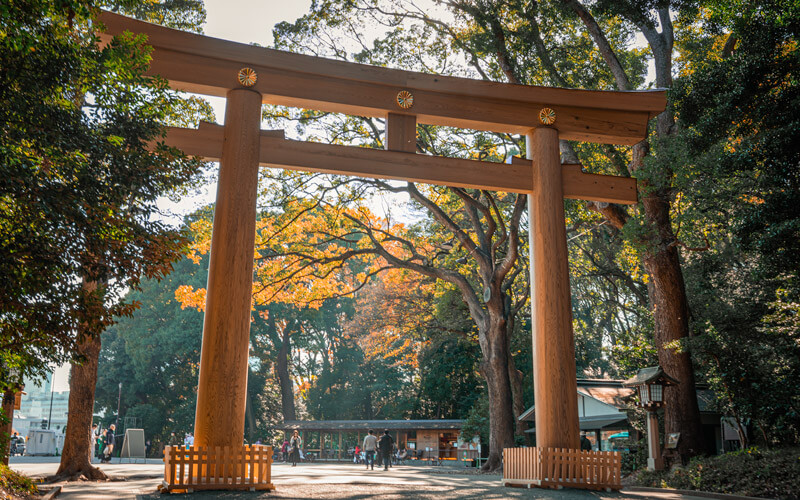
To ease your way into this bustling city, we recommend visiting the Meiji Shrine (Meiji Jingu) first. Become swept away by the serenity of the forest amidst Tokyo’s concrete jungle. The forest is made up of roughly 100,000 trees, each donated from various regions in Japan to honour Emperor Meiji and Empress Shoken who were fundamental to the modernisation of Japan. At the centre of the forest, you will find the main shrine buildings where visitors can partake in Shinto practices such as writing wishes on an ema, making offerings and buying charms. It’s also worth exploring Yoyogi Park next door.
Takeshita Street
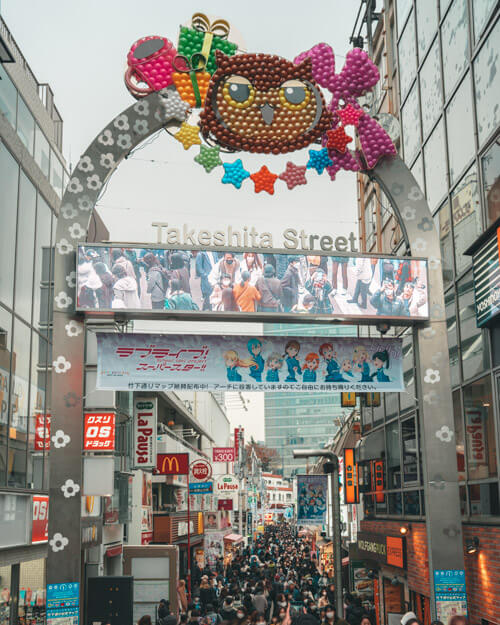
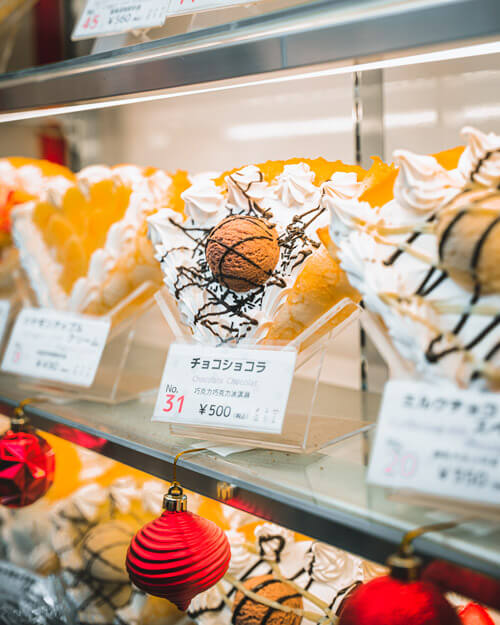
From the shrine, walk over to Takeshita Street. This pedestrian street is one of the brightest and busiest streets in Tokyo. From fashion to food to photo ops, this street has it all. Lined with independent shops, themed cafes, and all things rainbow, a lot of fun can be had within this 400m strip.
Harajuku Gyozaro
If you’re not already full from rainbow candy floss, crepes galore and tornado potatoes we suggest heading to Harajuku Gyozaro for lunch. Usually, with a queue outside, these dumplings are definitely worth waiting for. Sit at the bar and watch as the gyoza are perfectly fried. These pocket-friendly parcels of deliciousness make for the perfect midday meal.
Miyashita Park
After lunch, stroll along to Miyashita Park, window shopping on your way there. Miyashita Park is a rooftop garden on top of a mall which is the ideal place to grab a coffee and take in Tokyo. The park has a small bouldering wall, a skateboard park and a sand court for volleyball. If you don’t fancy getting stuck in with the activities, they certainly make for some amusing entertainment.
Shibuya Crossing
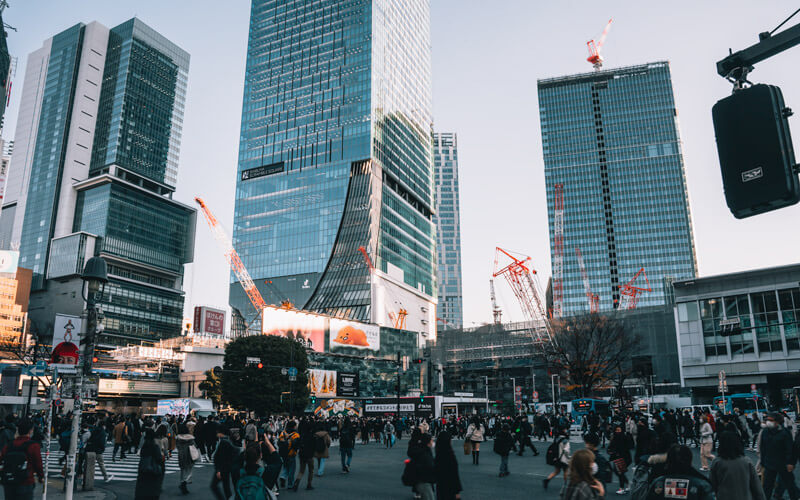
You should now have made it to Shibuya. The obvious, must-see, sight in Shibuya is Shibuya Crossing. Featured in films such as The Fast and The Furious: Tokyo Drift and Lost in Translation, Shibuya Crossing is one of Tokyo’s famous sights. See it from street level first (we may have crossed it three times in a row) before trying to glimpse it from above. Good viewpoints are the upper floors of Starbucks, L’Occitane cafe and Shibuya Sky.
Hachiko Memorial Statue
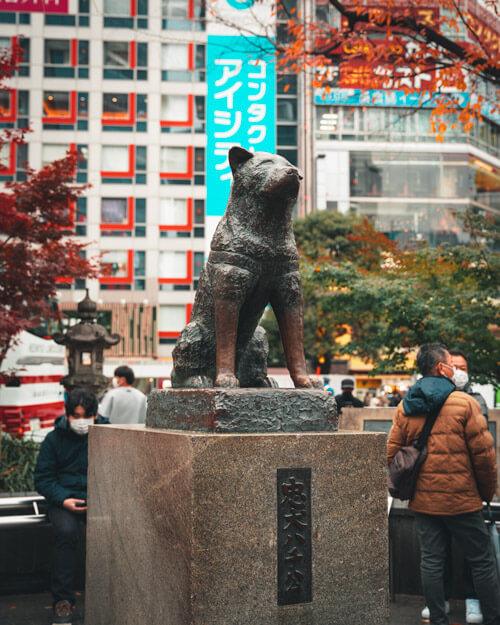
Also in this area is the Hachiko Memorial Statue. The bronze statue is in honour of the beloved, loyal dog Hachiko. The story goes that Hachiko’s owner was a University professor who Hachiko would escort to and from the station every day on his journey to work. Sadly, the professor died at work and never returned home. Despite this Hachiko still went to the station to wait for his master.
Ichiran Ramen
Explore the shopping delights that Shibuya has to offer in Shibuya 109, Tower Records and Parco to work up that appetite in time for dinner. For dinner, we recommend one of our favourite ramen spots Ichiran Ramen. Eating ramen in an individual booth and being served through a small latch was a cultural, culinary experience we were so excited to try. And the ramen definitely lived up to the hype. Select your noodle firmness, broth richness and spice levels before tucking into this iconic Japanese dish.
Day 2 – Shinjuku
Shinjuku is what most people imagine Tokyo to be like. The skyscrapers, neon lights and overwhelmingly busy train station sit alongside traditional wooden yakitori stalls. It is a 24-hour neighbourhood that is all business during the day, and all entertainment at night. There is always something happening in Shinjuku.
Uobei
Day two technically starts in Shibuya but will end in Shinjuku. Begin the day with brunch at Uobei, a conveyor belt sushi restaurant. If like us, you have a “Japan bucketlist” of random experiences, this is surely one of them. What could be more fun in a restaurant than ordering off a tablet and watching it whizzing its way along to you? Not only is this enjoyable, but it is also budget-friendly and of decent quality.
Mega Don Quijote
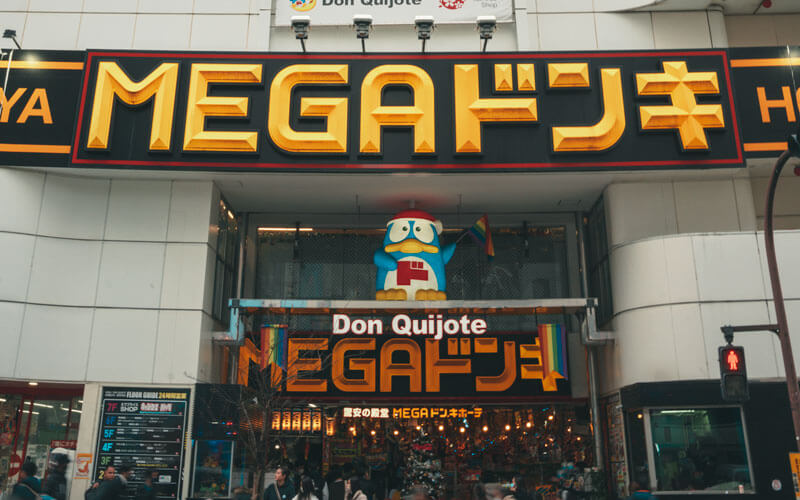
Not far from Uobei, you will find Mega Don Quijote. It’s hard to find the words to describe this store, or even explain why it is you should go there. But you just have to go. Even if you don’t buy anything (although you probably will because this store has everything) it is still worth scrambling through the maze of each floor, browsing all the random products on offer. We got everything from Christmas antlers to socks to hiking boots to toiletries in this store. Bring your passport to benefit from tax-free shopping too.
Shinjuku Gyoen National Park
Ride the incredibly efficient metro to Shinjuku Gyoen National Park. This 144-acre green expanse holds beautifully designed gardens and a greenhouse. It also makes for a great place to see the blossom in the spring. Spend an hour or two exploring the grounds and relaxing on a park bench.
Tokyo Metropolitan Government Building
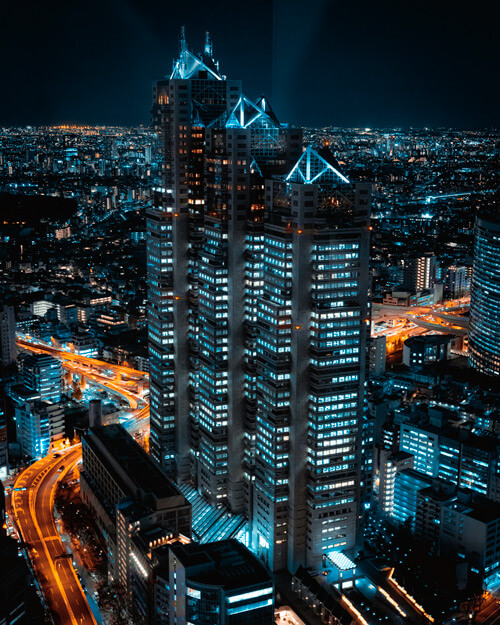
One of the absolute highlights from our time in Tokyo was the Tokyo Metropolitan Government Building. Here you can have a 360 panoramic view of Tokyo and the best part? It is completely free. No need to splash out on the Skytree or Tokyo Tower. See them as part of the cityscape from the Tokyo Government Building instead! The best time to visit is at sunset. Watch the sky change colours but stick until it’s dark to see Tokyo really light up. This city just goes on and on into the horizon.
Shinjuku Nightlife
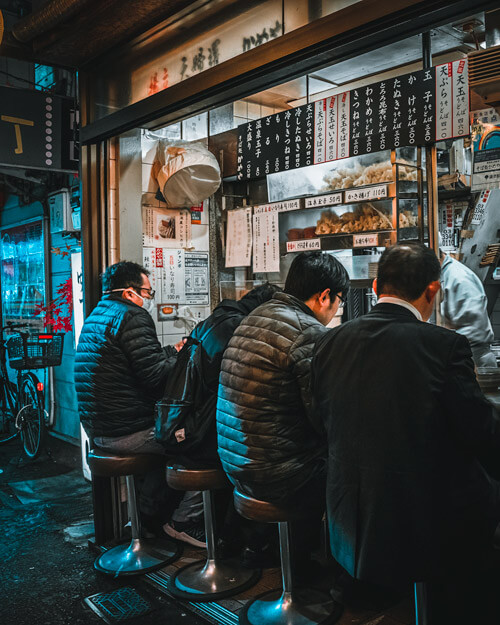
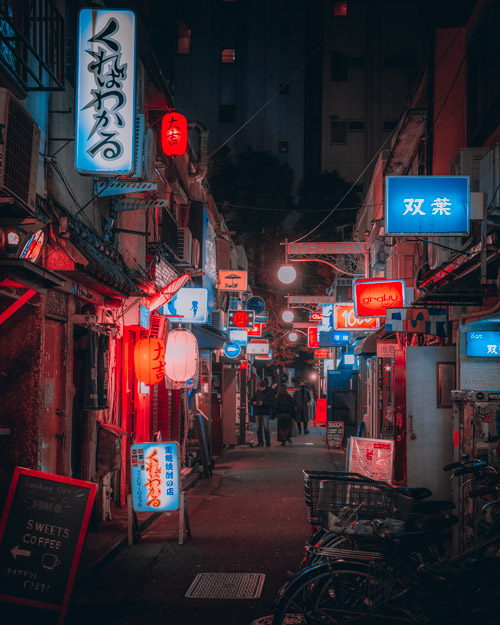

Shinjuku is known for its nightlife. And some of it can be shady so keep your wits about you. That being said, there are some areas you need to see at night in Shinjuku. Seek out the Godzilla Statue in Kabuchiko, eat yakitori amongst locals in Piss Alley and enjoy some karaoke in Golden Gai. We found Golden Gai to have a more seedy feeling to it but really enjoyed the atmosphere of Piss Alley.
Day 3 – Asakusa and Akihabara
Possibly the day of most contrast in this itinerary.
Sensoji Temple
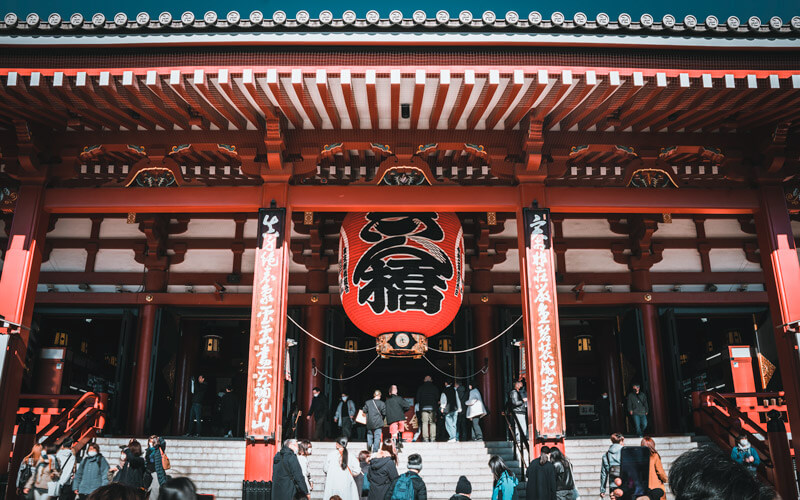
Make your way over to Asakusa and visit the Sensoji temple in the morning. One of Tokyo’s more vibrant and colourful temples, Sensoji is the oldest Buddhist temple in the city. Visitors are welcomed in through the Kaminarimon (Thunder Gate) and along the 200m shopping street to the temple itself. Find out your fortune for JPY100 by shaking a numbered stick out of a box and finding the corresponding drawer. If your fortune is bad, tie it to one of the designated racks to do away with your bad karma. If it is good, keep hold of it. Whether you believe your fortune or not, it is still a fun and cheap activity to do at the temple.
Make sure you browse the shopping street and surrounding area to find some fun souvenirs or tasty bits of street food. We enjoyed dango (the sweetened colourful rice balls on sticks) from one vendor.
Akihabara Shopping
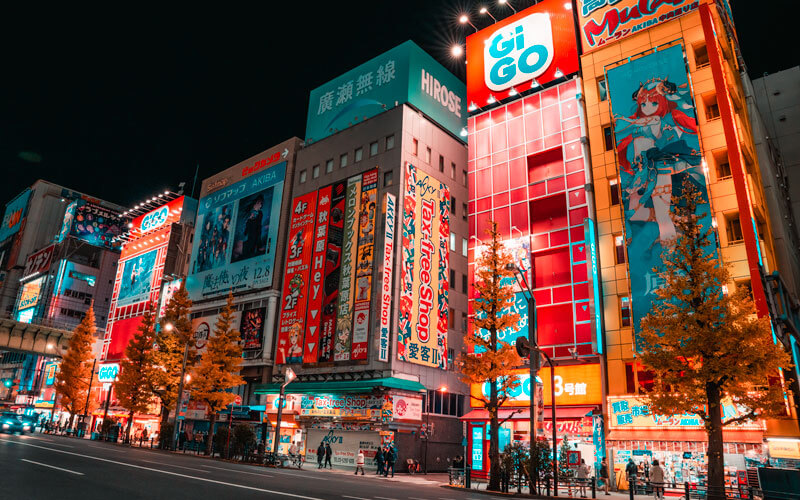
After your morning of culture, it’s time to see another side of Japan. The fun side. Head on over to Akihabara for all things anime and arcades. For anime and manga goods, we suggest having a mooch around the Animate and Mandarake stores. You will find all sorts of collectables, from figures to trading cards. The are also cosplay sections and pornographic sections which are also amusing to have a look at.
Akihabara is also known as the electronic district. If there’s anything you have forgotten or would like to treat yourself to, check out Yodobashi Camera or Bic Camera. For those into the more retro electronics, the Super Potato store is a must. Here you will find retro and vintage games and merchandise with the fifth floor housing a retro game arcade. If you collect the capsule toys, check out Akihabara Gachapon Hall, which has many of the machines. Even if you don’t collect them, it’s fun to get a capsule as a quirky souvenir.
Akihabara Arcades
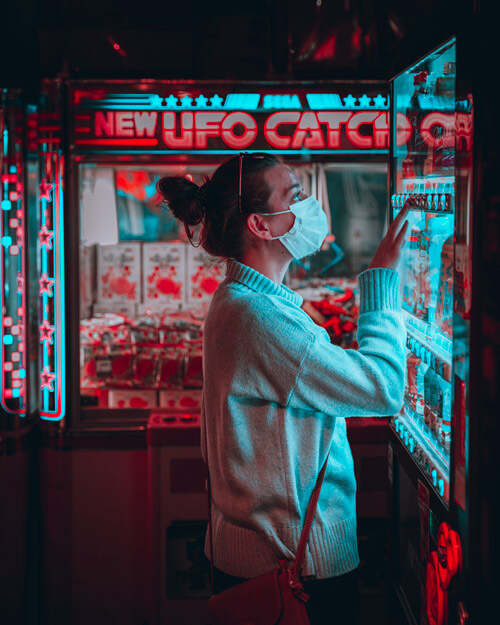
Once the shopping and browsing are out of the way it’s time for the bin guns. The arcades. We spent 8 hours just in the arcades. We love them. Claw machines (or UFO machines as the Japanese call them) usually take up at least two floors of whatever arcade you go in. Apparently, if you spend enough or make a big enough commotion the workers may take pity and give you the item, depending on the value, of course.
You will also find floors of rhythm/music games, sports games and racing games. We ended up getting hooked on the darts game. It was so much fun, especially the set-up at GiGo 3 which had a more vintage feel. Recommended arcades are all five of the GiGo ones, formerly known as Sega, Taito and Tokyo Leisure Land. Why not give in to your inner child and have one of the most fun days of your life?
Maid Cafe
Finally, finish your time in Akihabara at a Maid Cafe. There are many in the area and plenty of girls in “sexy” French maid outfits on the streets trying to lure you inside. Some of them can be sketchy with apparent acts of spanking, nail clipping and ear cleaning whereas others just serve your dish with a cute ketchup heart. Look into which vibe most suits you before selecting your maid cafe. The most popular ones are @home cafe and Maidreamin.
Day 4 – Tsukiji, Ginza, Roppongi
Tsukiji Outer Market
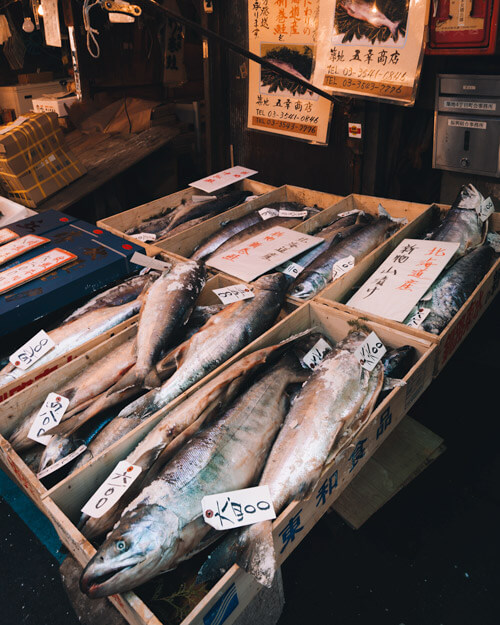
Let’s start day four with sushi for breakfast! Tsukiji Outer Market is the perfect place to learn about the culinary culture in Japan. Narrow streets lined with around 400 stalls attract locals and tourists alike to find the freshest seafood in the city. Whilst the inner market with its famous tuna auction has relocated to Toyosu, the outer market has remained in Tsukiji. Here you will find many of the best seafood restaurants opening their doors as early as 5am for hungry customers to get their sushi fix. We recommend at least stopping for an unagi skewer.
Happy Pancake
If early morning sushi isn’t your thing, Happy Pancake in Ginza is sure to satisfy your tastebuds. Light and fluffy souffle pancakes are the speciality here. Served both sweet and savoury, there is something for everyone. If we are being honest, the original/plain pancakes can taste eggy so we opted for berry compote and mascarpone toppings.
Ginza Shopping
Ginza is the most upmarket neighbourhood in all of Tokyo. Known for its luxury brands and high-end dining, Ginza didn’t exactly suit our budget travelling style but it was still fun to window-shop. It is also a great area for appreciating modern architecture. Look out for Nakagin Capsule Tower, the Mikimoto building and the Hermes building.
Tokyo Tower

Either jump on the metro or meander through the streets towards Tokyo Tower. Reminiscent of the Eiffel Tower, Tokyo Tower stands proudly on Tokyo’s skyline. This iconic traffic-cone-coloured tower offers tourists an excellent viewpoint across Tokyo. Our favourite place to view the tower was from Momiji Waterfall where the Japanese Maple trees had transformed into vivid reds and oranges.
Explore the nearby Buddhist Temple, Zojo-ji, where the modern tower contrasts against the 17th-century buildings. The ornate, peaceful complex features a mausoleum of the Tokugawa family and a small museum. The impressive entrance gate dates back to 1622, having survived earthquakes, fires and WWII.
Roppongi Hills
For another excellent view of Tokyo Tower, head on over to Roppongi Hills. From Roppongi Keyakizaka Dori, Tokyo Tower almost poses in this picture-perfect spot. This is especially magical during the winter months when the street is illuminated with festive lights and the tower is lit up orange and white.
Roppongi Hills has more of an international vibe with large companies based in the area. As such, the shops and restaurants will be more familiar to most tourists. We may have enjoyed a Shake Shack whilst we were here.
Mori Art Museum
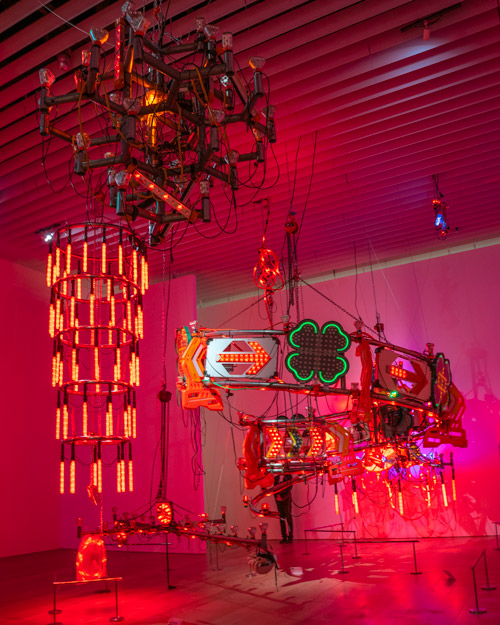
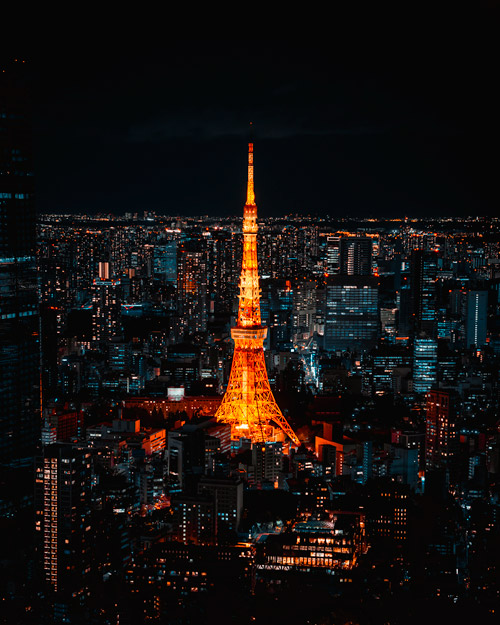
The main draw to the area is the Mori Art Museum and its Sky Deck. Whilst we didn’t exactly love all the contemporary art displays, they also do special exhibitions. We were gutted we missed our chance to see the exclusive display of our favourite anime, HunterXHunter. We suggest having a look to see if any of the temporary displays are of interest. If you have a ticket for the gallery, it is only an extra JPY300 to go up to the Sky Deck. Here you are literally standing on the roof of the building, overlooking Tokyo. It was a mixture of fear and amazement for us.
Day 5 – Tokyo Station and teamLab Planets
It might seem a bit random that we are suggesting spending time in a train station but trust us, there are things worth seeing here.
Tokyo Station Character Street
In case you haven’t already grasped it, the Japanese love characters and cute things. So it comes as no surprise that there is literally a “street” dedicated to it in Tokyo Station. More popular shops include Ghibli, Pokemon and Disney but there are also other more locally known character stores on offer. A lot of the products in the Disney store were exclusive to Japan so if you are a big Disney fan (or know one) these could make great souvenirs.
Tokyo Ramen Street
Would you believe us when we say some of the best ramen in Tokyo is found in Tokyo Station?
Similarly to Character Street, there is also a Ramen Street where some of the best ramen restaurants in Tokyo have set up shop. Nearly every restaurant will have a queue but don’t let that put you off, they tend to move quickly.
Each shop specialises in a type of ramen so whatever you are in the mood for, this street will have it. Rokurinsha has dipping ramen (tsukeman), Oreshiki-Jun has tonkotsu and Soranoiro Nippon offers vegan options. Whichever restaurant you choose, you won’t regret it.
teamLab Planets
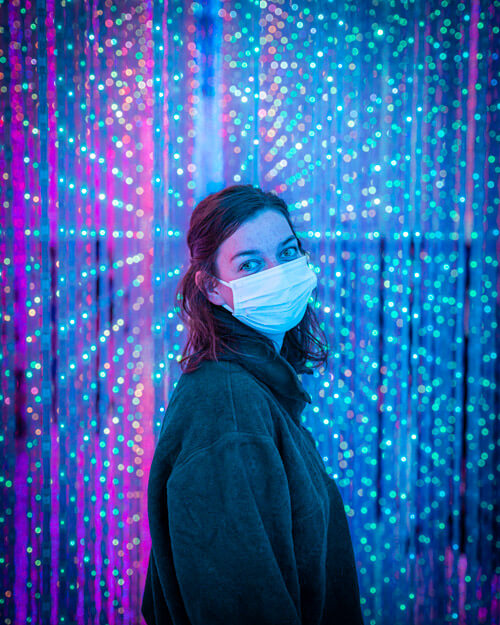
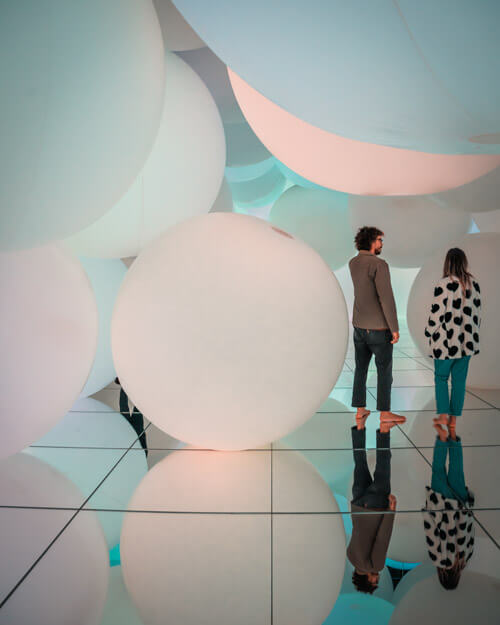
First off, make sure you book your tickets in advance. We also successfully hunted around online for promotional codes before booking the tickets so definitely do the same to save some pennies.
We feel that the journey to teamLab Planets was an attraction in its own right. Board to Yurikamome Line and enjoy the journey above ground. It#s like riding a rollercoaster through the city before it goes across the bridge offering amazing views of the skyline.
Anyway, teamLab. teamLab Planets is a digital art gallery that provides an immersive experience to those who visit. It is genuinely the best art gallery we have ever been to. The multi-sensory displays guide visitors to touch, hear and see each element. You experience the whole museum barefoot as you pass through water, mirrors and beanbags, enabling a most intense connection with the exhibits. This is an absolute must-do during your time in Tokyo. Please don’t miss it.
Tokyo Day Trips
Unsurprisingly, Tokyo is amazingly well-connected to most parts of Japan. With the help of the bullet train, journey times are dramatically reduced, opening up more possibilities to tourists. Here are the day trips we most recommend taking from Tokyo:
Mt Fuji
It almost feels wrong to visit Japan and miss one of its most famous landmarks. Mount Fuji is can be reached from Tokyo by bullet train in just under two hours.
You have three options for an amazing Mt Fuji day trip:
Lake Kawaguchi
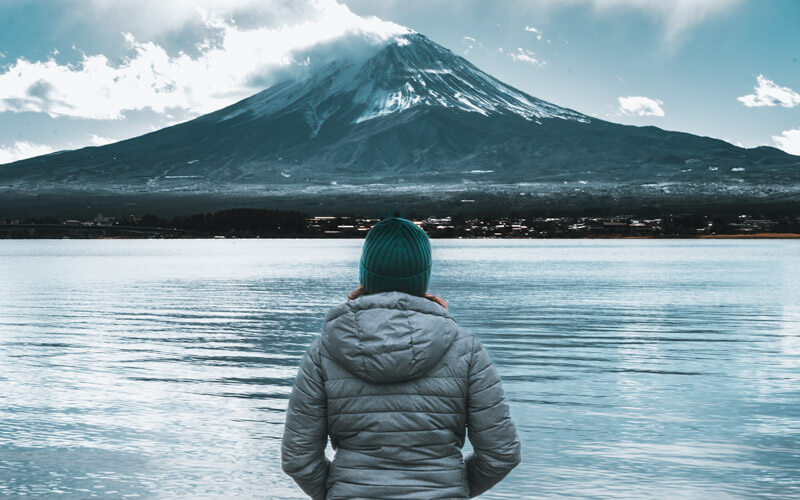
For your best chance of seeing the notoriously shy Fuji-San, get yourself to Lake Kawaguchi. One of the famous Fuji five lakes, Lake Kawaguchi is easy to access and offers amazing views of Fuji-san dominating the landscape.
There are plenty of things to do around Lake Kawaguchi such as the Mt Fuji Panoramic Ropeway, the maple corridor and various museums. Head to the far side of the lake for uninterrupted views of Fuji-san and if you are lucky, its reflection in the lake.
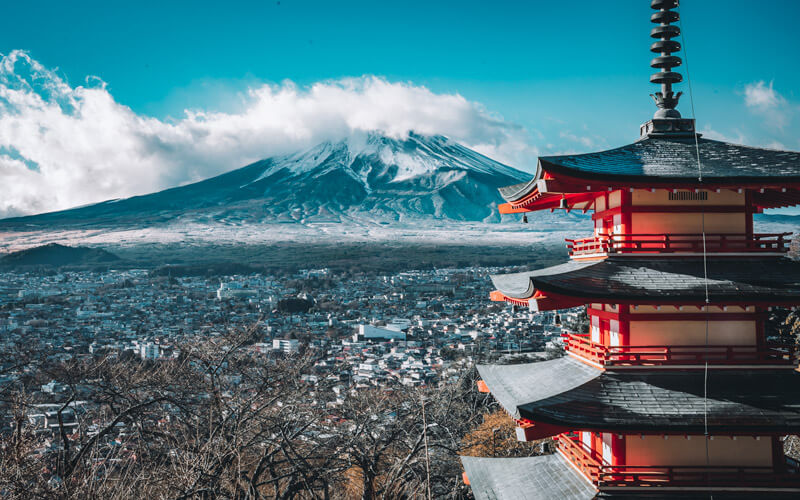
We actually made a slight detour to the Arakurayama Sengen Shrine which you will recognise as one of the most famous views in Japan. To get here, you first take the metro to Shimoyoshida Station and then hike up to the viewpoint. We highly recommend this if you are up for getting off the beaten path.
Hakone
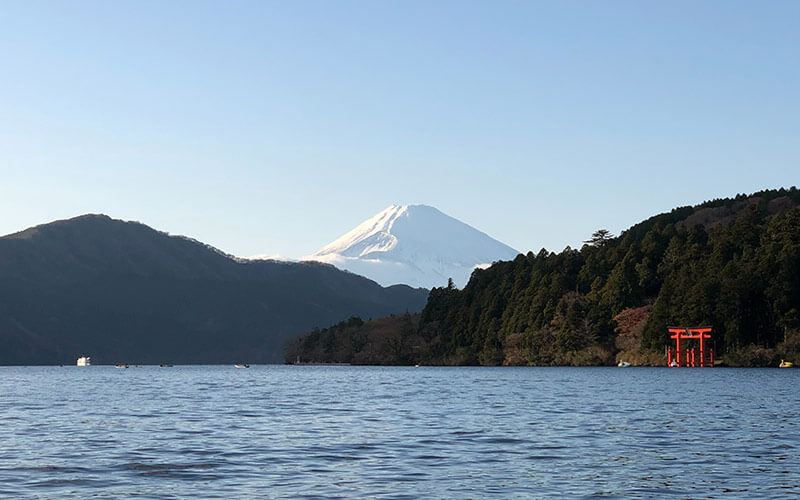
The hot spring resort town of Hakone is a super popular day-trip destination in its own right. With clear weather, you will be treated to stunning views of Mt Fuji in the distance.
Once there you can visit The Hakone Open-Air Museum, Hakone Shrine by Lake Ashi or just kick back and relax in a hot spring.
We haven’t been to Hakone ourselves as we wanted to increase our chances of seeing Fuji-san but we have heard it’s great.
FujiQ Highland Park
Ever wanted to see one of the most famous sights in the world from a rollercoaster? Well, you can from FijuQ Highland Park.
One of Japan’s most famous theme parks, FujiQ Highland Park offers non-stop thrills. Not only can you see Fuji-San in all her glory, you can also experience two Guiness-World Record holding rides: Dodonpa (fastest accelerating) and Takabisha (steepest rollercoaster). Whilst this theme park does not mess around when it comes to their attractions (looking at you “world’s scariest haunted house”), it’s fun for all the family with Thomas Land and anime themed areas.
Nikko
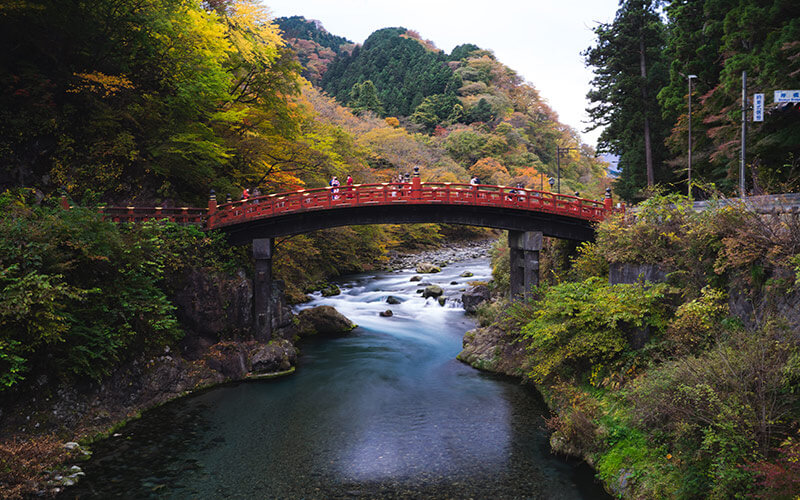
Another fabulous day trip that takes just 2 hours from Tokyo is Nikko. If you are eager to explore more nature, temples and shrines, Nikko is the place to go. Nikko is beautiful year round, but especially during autumn. We suggest getting there early to enjoy a full day here.
Key things to see and do in Nikko include:
- Shinkyo Bridge
- Rinno-ji Temple
- Hiking in Nikko National Park
DisneySea
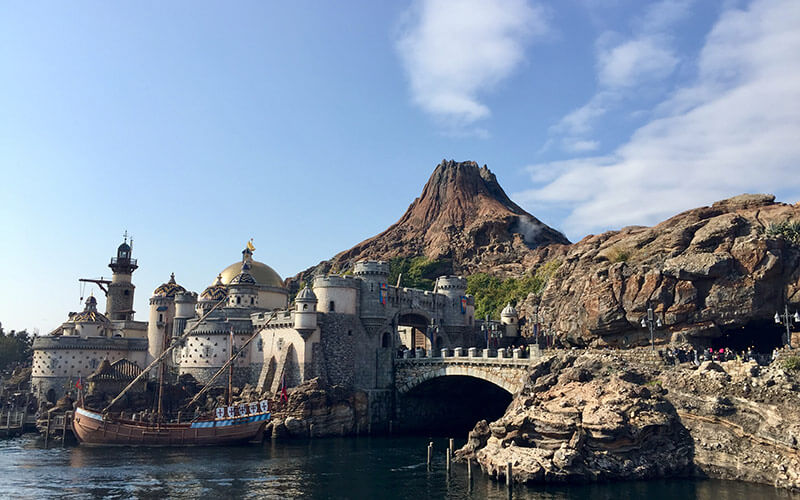
We’ve all heard of DisneyLand and DisneyWorld but Tokyo is home to the world’s only DisneySea. Tokyo DisneySea is inspired by all of the sea myths and legends and is made up of seven ports.
Key attractions at Tokyo DisneySea include:
- Mermaid Lagoon for all things Little Mermaid
- Lost River Delta with it’s Indiana Jones themed ride
- The Journey to the Centre of the Earth ride.
Conclusion
We absolutely loved our time in Tokyo. It’s definitely one of those cities that you will keep coming back to because there is so much to see and do. It is also a culinary delight.
Whilst one week might not seem like enough time, it will give you the chance to scratch the surface of what an amazing city like Tokyo has to offer.
Travelling Japan? Check out our other Japan blogs for some trip inspiration!


